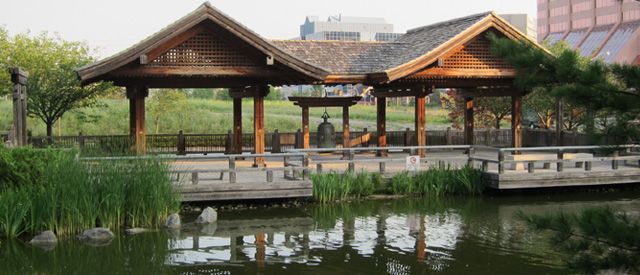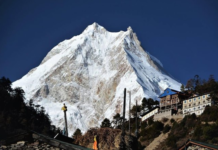Nepal, nestled in the heart of the Himalayas, is a trekker’s paradise, offering a blend of breathtaking landscapes, rich cultural encounters, and physical challenges that draw adventurers from around the globe. Among the myriad options, four stand out for their unique appeal: the Manaslu Circuit Trek, Annapurna Base Camp Trek, Langtang Valley Trek, and Everest Base Camp Trek. Each provides a window into Nepal’s diverse ecosystems, from lush subtropical forests to stark alpine deserts, while immersing hikers in local traditions influenced by Tibetan Buddhism, Gurung heritage, and Sherpa lore. This article delves into these iconic journeys, highlighting their routes, challenges, and rewards, before comparing them to help you decide which might suit your next adventure. Whether you’re a seasoned mountaineer or a first-time trekker, these paths promise unforgettable experiences amid some of the world’s highest peaks.
Manaslu Circuit Trek: The Remote Wilderness Adventure
The Manaslu Circuit Trek encircles Mount Manaslu, the eighth-highest mountain in the world at 8,163 meters, offering a sense of isolation that’s increasingly rare in Nepal’s trekking scene. Starting from the village of Soti Khola or Machha Khola after a scenic but bumpy drive from Kathmandu, the trail winds through the Budhi Gandaki Valley, crossing suspension bridges over roaring rivers and ascending through terraced fields and pine forests. As you progress, the scenery evolves into high-altitude meadows and glacial zones, culminating in the challenging crossing of Larkya La Pass at 5,160 meters.
This trek typically spans 14 to 17 days, covering about 177 kilometers, and is rated as hard due to its remote nature, steep ascents, and potential for altitude sickness. Trekkers must obtain restricted area permits (RAP), Annapurna Conservation Area Project (ACAP), and Manaslu Conservation Area Project (MCAP) permits, and a licensed guide is mandatory, adding to the adventure’s structured yet exclusive feel. Highlights include panoramic views from Larkya La of peaks like Himlung Himal, Cheo Himal, and Annapurna II, as well as visits to ancient monasteries such as Pungyen Gompa and Ribung Monastery in villages like Sama Gaun. The cultural immersion is profound, with interactions among the Nubri and Tsum people, who maintain Tibetan-influenced lifestyles complete with mani walls, prayer flags, and traditional festivals.
Best undertaken in spring (March to May) for blooming rhododendrons or autumn (September to November) for clear skies, the Manaslu Circuit sees fewer crowds than its counterparts, providing solitude amid pristine biodiversity. Wildlife sightings might include blue sheep, Himalayan thar, or even elusive snow leopards in the Manaslu Conservation Area. Costs range from US$1,200 to US$1,700, making it moderately priced but value-packed for those seeking an off-the-beaten-path experience. Accommodation is basic teahouses with shared facilities, emphasizing the trek’s raw authenticity.
Annapurna Base Camp Trek: The Scenic Sanctuary Journey
Often called the ABC Trek, the Annapurna Base Camp trek route leads to the heart of the Annapurna Sanctuary, a natural amphitheater surrounded by towering giants like Annapurna I (8,091 meters) and Machapuchare (6,993 meters), known as Fishtail Peak. Accessible from Pokhara via a short drive to Nayapul or Ghandruk, the path meanders through Gurung villages, rhododendron forests, and bamboo groves before reaching the base camp at 4,130 meters.
Shorter in duration at 7 to 12 days and covering around 110 kilometers, this trek is moderate in difficulty, with steep stone staircases around Chhomrong but manageable for beginners thanks to well-maintained trails and lower maximum altitude, reducing AMS risks. Key attractions include the hot springs at Jhinu Danda for post-trek relaxation and optional side trips to Poon Hill for stunning sunrises over the Annapurna range. Culturally, it’s a mosaic of Gurung and Magar communities, where trekkers can enjoy local folk songs, taste homemade raksi, and explore museums in Ghandruk.
The best seasons mirror others—spring and autumn—for optimal weather and floral displays. With moderate crowds and budget-friendly costs (US$600 to US$1,100, plus ACAP and TIMS permits), ABC appeals to families and time-constrained adventurers. Infrastructure is robust, with clean lodges offering hot showers and varied menus, enhancing comfort without diluting the natural beauty of lush valleys transitioning to alpine meadows.
Langtang Valley Trek: The Valley of Glaciers Escape
Dubbed the “Valley of Glaciers,” the Langtang Valley Trek offers a compact yet captivating foray into Nepal’s northern frontier, near the Tibetan border. Beginning with a long drive from Kathmandu to Syabrubesi, the route ascends through rhododendron forests and along the Langtang River to Kyanjin Gompa at around 3,870 meters, with an optional hike to Tserko Ri viewpoint at 4,984 meters.
Lasting 7 to 10 days and spanning about 80 kilometers, it’s moderately difficult and more accessible for novices or families, with fewer altitude challenges than higher treks. The scenery is diverse, featuring snow-capped peaks like Langtang Lirung (7,227 meters), Ganesh Himal, and Dorje Lakpa, alongside serene rivers and wildlife-rich forests. Culturally, it’s dominated by Tamang people with Tibetan Buddhist influences, evident in traditional villages, monasteries, and cheese factories in Kyanjin.
Ideal in spring for wildflowers or autumn for clarity, Langtang experiences low to moderate crowds, providing a peaceful retreat. Costs are the lowest among the four, at US$600 to US$1,100, with basic but adequate teahouses. Rebuilt after the 2015 earthquake, the region showcases resilience, adding a layer of inspirational depth to the journey.
Everest Base Camp Trek: The Ultimate Himalayan Pilgrimage
No trek embodies adventure like the Everest Base Camp (EBC) Trek, leading to the foot of the world’s highest mountain at 5,364 meters, with a side ascent to Kala Patthar (5,545 meters) for unparalleled Everest views. Starting with a thrilling flight to Lukla, the path traverses Sherpa villages, suspension bridges, and the Khumbu Glacier through Sagarmatha National Park.
Typically 12 to 14 days long and 130 kilometers, it’s moderate to hard, demanding acclimatization in Namche Bazaar and Dingboche to combat high-altitude effects. Highlights include Tengboche Monastery for Buddhist ceremonies and vistas of Ama Dablam, Lhotse, and Nuptse. Sherpa culture shines through, with stories of mountaineering legends and warm hospitality.
Peak seasons are spring and autumn, though high crowds can make it bustling. Costs run US$1,250 to US$1,800, reflecting flights and premium amenities like Wi-Fi in Namche. It’s iconic but commercialized, ideal for those chasing prestige.
Comparing the Four Treks: Finding Your Perfect Path
When pitting these treks against each other, differences emerge in accessibility, intensity, and vibe. Manaslu’s remoteness and higher difficulty (hard, 5,160m max) contrast with ABC’s moderate ease and lower altitude (4,130m), making the latter more beginner-friendly. Langtang, shortest and cheapest, offers serenity without extreme heights (4,984m), while EBC’s prestige comes with crowds and costs but unmatched views. Culturally, Manaslu and Langtang emphasize Tibetan authenticity, ABC diverse ethnic groups, and EBC Sherpa heritage. Scenically, all deliver, but Manaslu’s wildness stands out for solitude seekers. Budget-wise, Langtang and ABC are economical, Manaslu moderate, and EBC pricier. All share optimal trekking windows, but preparation for AMS is universal.
Conclusion
Nepal’s Manaslu Circuit, Annapurna Base Camp, Langtang Valley, and Everest Base Camp Trek each carve unique narratives in the Himalayas, from remote cultural dives to iconic summits. Whether you crave Manaslu’s untamed solitude, ABC’s floral sanctuaries, Langtang’s glacial peace, or EBC’s legendary allure, these journeys foster personal growth amid nature’s grandeur. Choose based on your fitness, time, and desires—perhaps starting with the accessible ABC or Langtang before tackling Manaslu or EBC. Ultimately, trekking here isn’t just about the destination; it’s about the transformative path, forging connections with landscapes and locals that linger long after the return. With responsible tourism, these trails will continue inspiring generations.
Contact Details
——————————–
Company address: Everest Trekking Routes Pvt. Ltd.
16 Khumbu, Nayabazaar, Kathmandu, Nepal
Mobile : +977-9843467921 (Rabin)
Email: info@everesttrekkingroutes.com
URL:– www.everesttrekkingroutes.com




